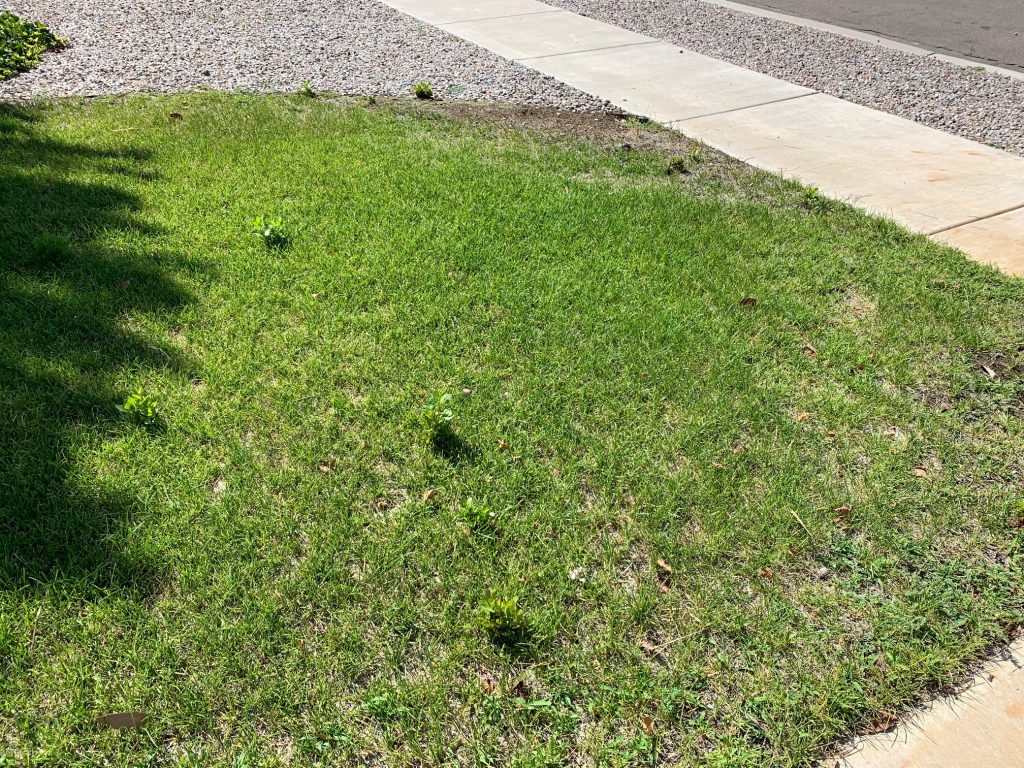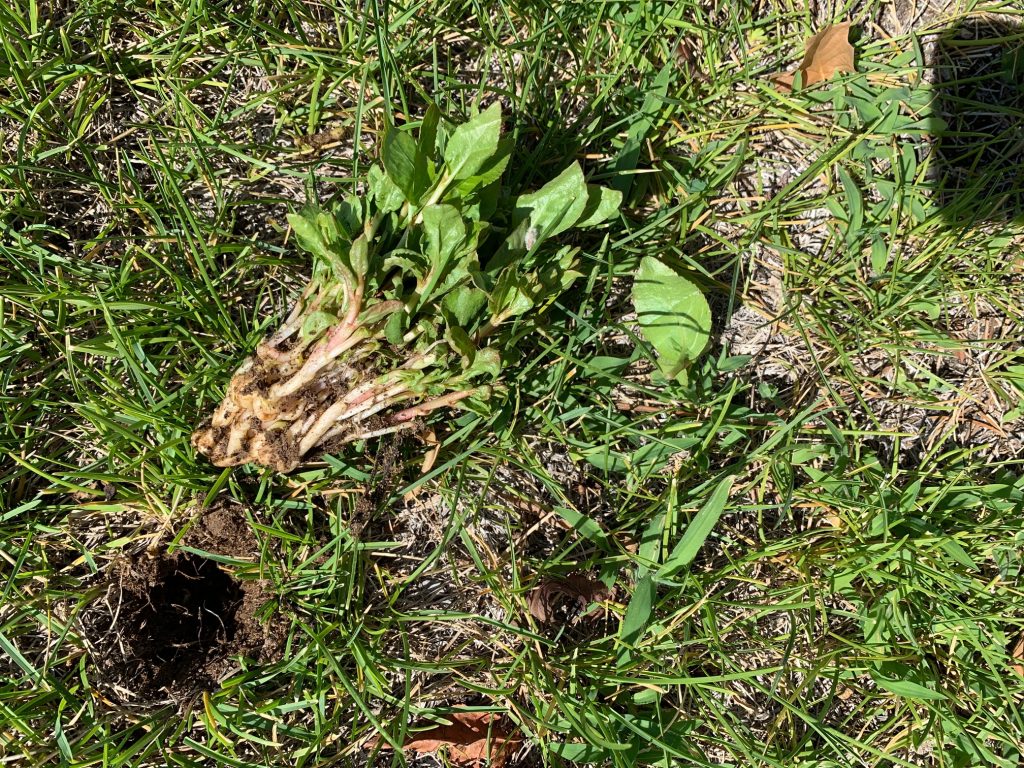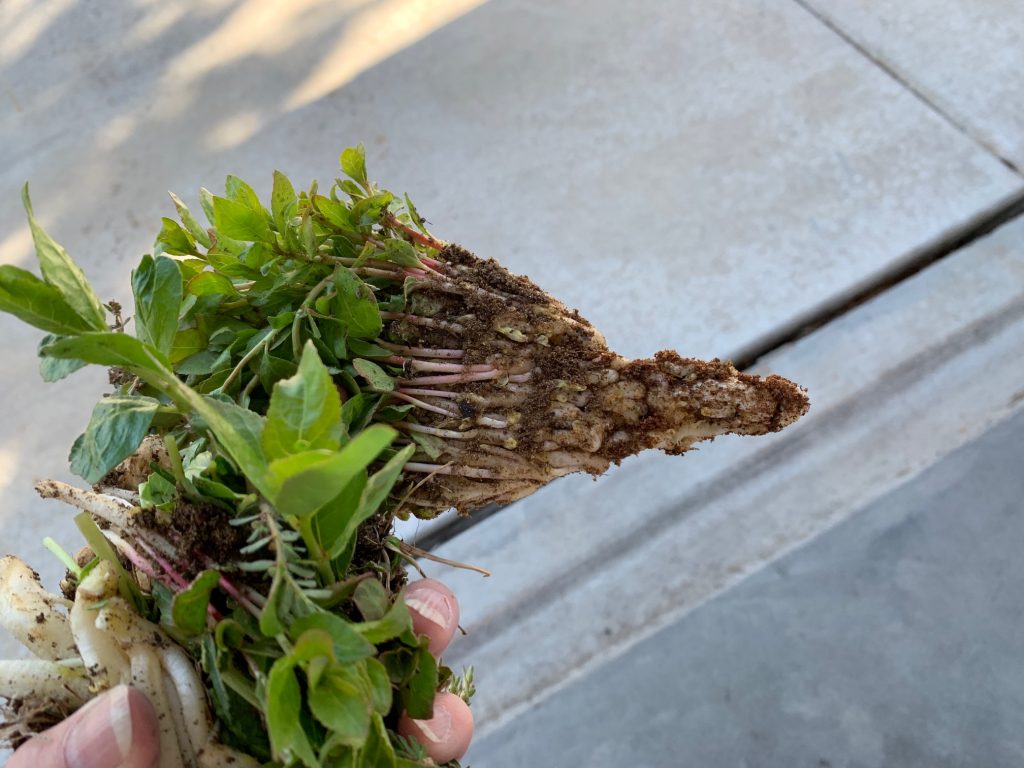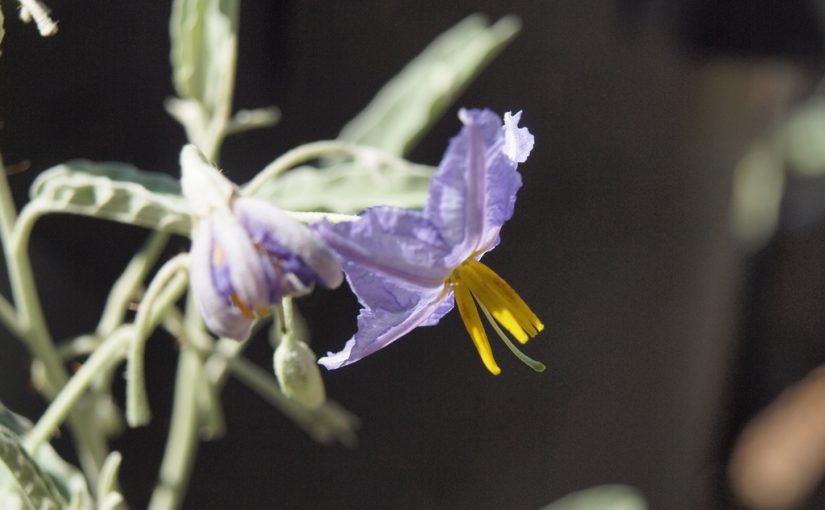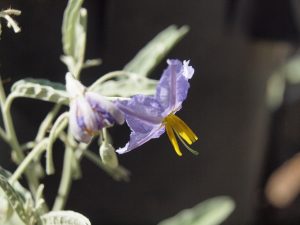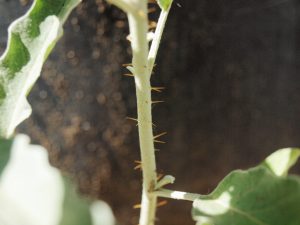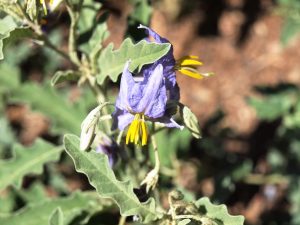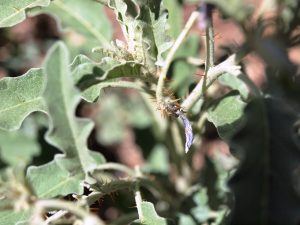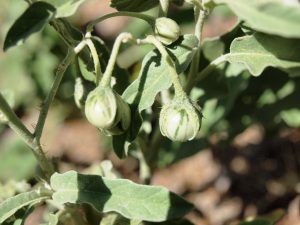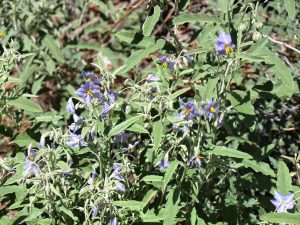The following question was forwarded to me by Dr. Marisa Thompson, New Mexico State University (NMSU) Extension Horticulture Specialist (see https://desertblooms.nmsu.edu), who hosted a quince harvest day at the NMSU Los Lunas Agriculture Science Center in December, 2021. Many volunteers who had helped Dr. Thompson through the summer and some other people participated in the harvest. We talked a while about growing quince (Cydonia) from seed taken from the fruit harvested:
From Debbie, one of Dr. Thompson’s volunteers:
How are you doing? Do you remember when we harvested quince last fall? Well, I saved the seeds in the refrigerator and now they are sprouting, Yay. My problem is that I do not remember what Curtis Smith said on how to plant them. Can you get that information for me or send me a link on what to do next?
Thank you
Debbie
The seeds should be “stratified’, that is treated to cold (approximately 40 degree F), moist storage for 6 to 8 weeks before planting. This may be accomplished in a refrigerator, or the seeds may be planted outdoors and kept moist. Outdoors will it will take longer to fulfill the seeds’ “chilling requirement” (needed length of exposure to cold temperatures required to sprout). I place my seeds on moist paper towels in resealable plastic bags in the refrigerator. Other people put them in moist sand in the refrigerator. Debbie’s seeds had begun sprouting in the refrigerator and she was asking what to do next.
My “trick”, what I have done in the past, with quince (apricot, rose, apple, and other) seeds after they have begun sprouting in the refrigerator is to carefully transplant them to moist potting soil in a large clean, reused styrofoam cup, or 4 to 6 inch flower pot. I cover the seed with moist soil so that the root points downward. If leaves have developed I leave those leaves above the potting soil. I keep the potting soil moist and put the new plant in a sunny window or under led lamps until the chance of freezing has past. I can then transplant the container grown seedlings outdoors at my convenience. The longer I leave it in the pot, the better the root development, but also the greater the chance of circling roots if I leave it too long. My first quince stayed in a large styrofoam cup for 5 years (way too long), but it exploded with growth when I planted it outdoors. Plants grown in this manner are quite forgiving if their basic needs are met (adequate water and light).
In October, 2020, I planted seed from flowering quince (Chanomeles – not the edible quince), “stratifying” them (cold moist storage in the refrigerator in resealable plastic bags on moist paper towels) for several months until roots began to appear. By February, 2021, they had begun to sprout and I did what I described above, putting them in 6 inch pots. Then in the summer I planted most of them outside. They are now (March, 2022) showing signs of resuming growth. Two of them (the smallest ones) I kept in the pots in the garage over the winter, watering as needed, until mid-February. I then moved them to a bright, warm, sunroom and within two weeks they had begun growing. I will plant them outside this spring.
I recently planted an apricot seed (pit not removed) that I stratified last summer. It had developed numerous roots and a shoot with blanched leaves (no chlorophyll developed in the refrigerator where I had kept it too long), but it was healthy. The resealable plastic bag had kept the paper towel and roots moist. After potting into a 6 inch pot, I placed it under an led lamp on the sun porch. It has greened up and is beginning to grow. I’ll be planting it outside in late April or early May.
Growing many temperate zone plants from seed is quite easy if you understand their need for the cold, moist pretreatment to simulate their exposure to winter conditions. They will not sprout without this because this is a mechanism to prevent them from sprouting too early and then being killed by cold winter temperatures. It is also important to understand that some of these will not be “true to type”. Due to cross pollination, the seedling will usually not produce fruit exactly like the parent fruit from which you took the seeds. Some will produce very poor quality fruit; however others will be of good quality. There is even the chance that you will have a superior fruit, better than the parent. Some, like the quince, will be of good quality. I hope you have fun producing your own new plants from seed you save from temperate zone fruits. Oh yes, it may take from 3 to 7 years, or longer, for some seedlings to begin bearing fruit.
